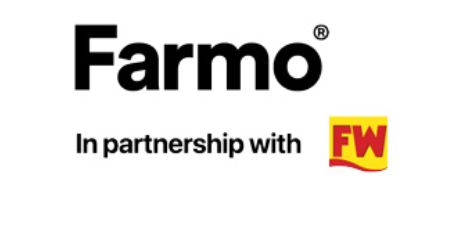What’s in Your Shed? visits a Staffordshire contractor
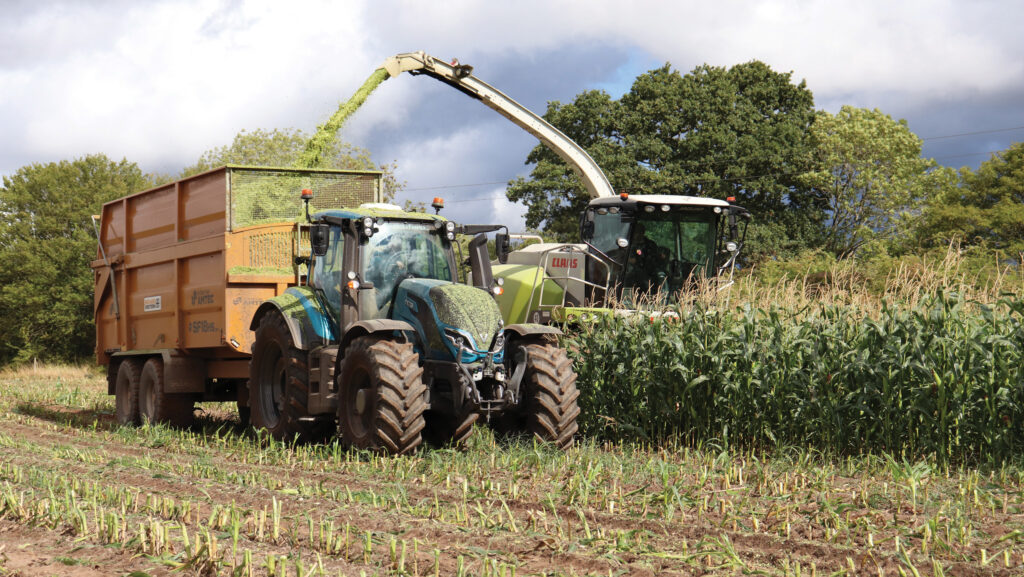 © Andrew Faulkner
© Andrew Faulkner Staffordshire farmer/contractor Matt Brewster was just 21 when he took over the home farm tenancy.
Seventeen years on, he walks Andrew Faulkner around the machinery sheds at Brewster Farms.
See also: First impressions: Valtra’s revamped 420hp S416 gets new cab
Farm facts
Brewster Farms
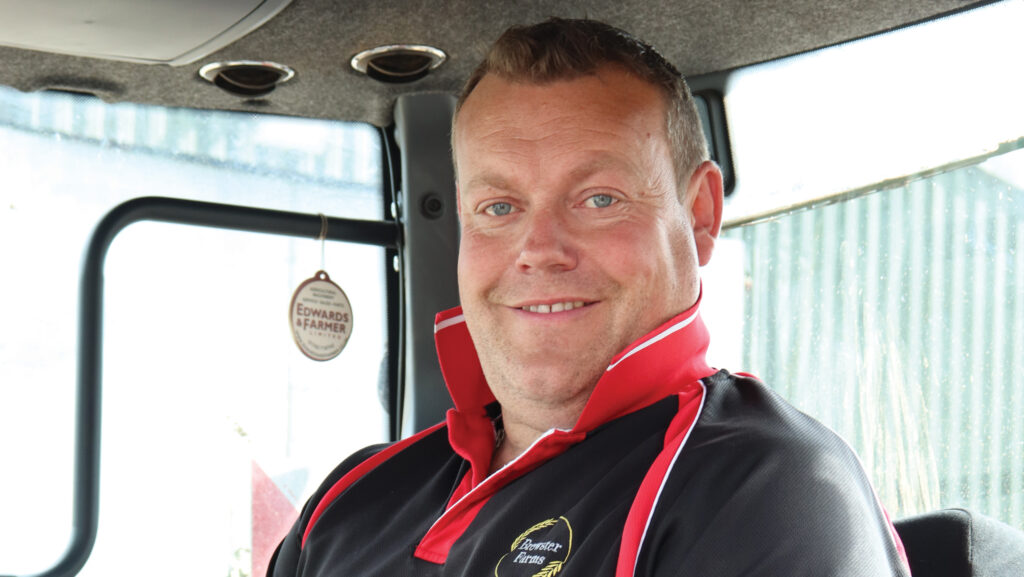
Matt Brewster © Andrew Faulkner
- Farm size 222ha (life tenancy), 415ha (short-term tenancies), 30ha (owned)
- Cropping 284ha winter wheat, 40ha winter barley, 80ha winter oilseed rape, 80ha maize, 40ha spring beans. Remainder in grass
- Stock 40 pedigree horned Hereford suckler cows and progeny
- Staff Matt Brewster, plus six full-time operators. Seasonal casuals taken on for busy periods
- Contracting Silaging (1,620ha grass, 364ha maize), combining (200ha), spraying (4,000ha), grass/cereal seeding (400ha), maize drilling (364ha), ploughing (300ha), round baling/wrapping (10,000 bales), big square baling (5,000 bales), muck/slurry spreading and umbilical work
How did you get started?
Well, it was one helluva birthday present. On my 21st in 2008, my father, Bernard, and our landlord, Stretton Estate, pretty much handed me the keys to the home farm and told me to get on with it.
Although I’d been on the farm full-time from 16, it was quite a leap.
Sadly, I lost my father three years ago, but he was always hugely supportive, and the landlord has been fantastic, too.
They’ve both played a massive part in enabling me to grow the business from the original 220ha up to what’s now 670ha – this increase largely coming from taking on shorter term tenancies with other landowners in the area.
We now trade as Brewster Farms, a partnership between my mother, my wife and me.
The contracting enterprise started in 2009 as a form of diversification, to make better use of the existing kit and allow the business to support two families.
Initially, we just did combining and drilling for local livestock farmers with a small area of arable.
And, mainly down to these customers’ requests, we moved into grass and muck operations about five years ago. Since then the business has really taken off.
Effectively, we aim to bring a farmer philosophy to contracting.
We may not be the cheapest or the fastest, but we’ll do the job properly.
How brand loyal are you?
Extremely. Or perhaps that should be dealer loyal rather than brand loyal.
I avoid big, multi-depot dealers, preferring to work with smaller, independent firms.
In our experience, you receive much better after-sales support, and, if you have a problem, you can actually speak to the owner and get it sorted straightaway.
With the larger companies, everyone wants to pass the buck.
On brands, we switched from Massey to Valtra tractors in 2021, while the combine and forager are from Claas.
Grass equipment is predominantly McHale, whereas Horsch and Amazone dominate our cultivator and drill line-up.
New or used, we go for quality brands and try to make the various items last.
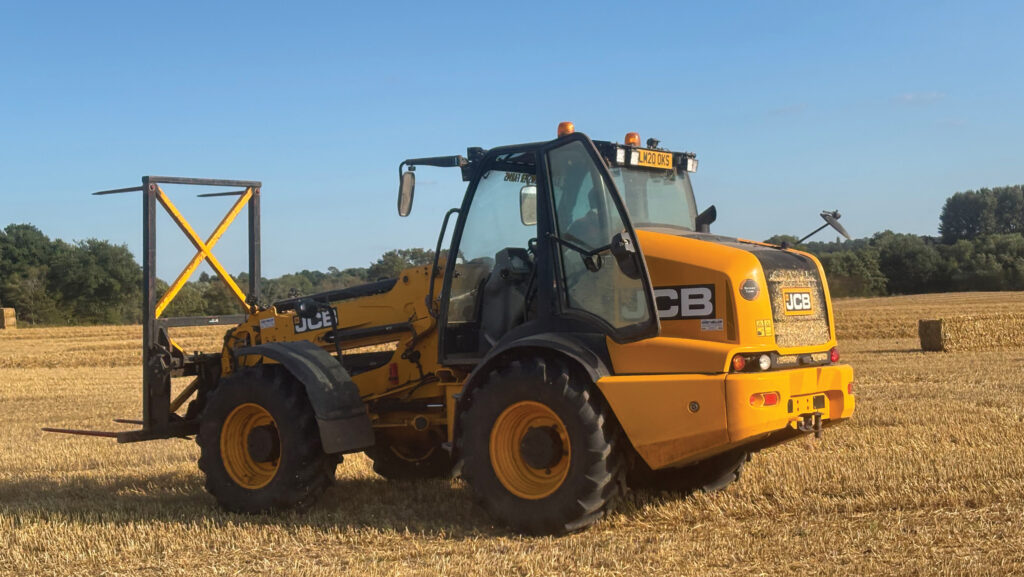
JCB TM320S © Matt Brewster
Handlers are an interesting topic in this area at the moment.
We’ve long thought JCB is the best of a bad bunch so run both a TM320S and a 542-70, but the firm’s local dealer, Rea Valley Tractors, has collapsed, which means we’ll be shopping elsewhere.
Still, JCB’s factory is only 25 miles down the road, so ongoing support shouldn’t be a problem
Favourite dealer?
For reasons already mentioned, our top two dealers are both smaller independents – Edwards & Farmer (Valtra, Horsch, TerraTech) and KO Machines (Amazone, Ktwo, McHale).
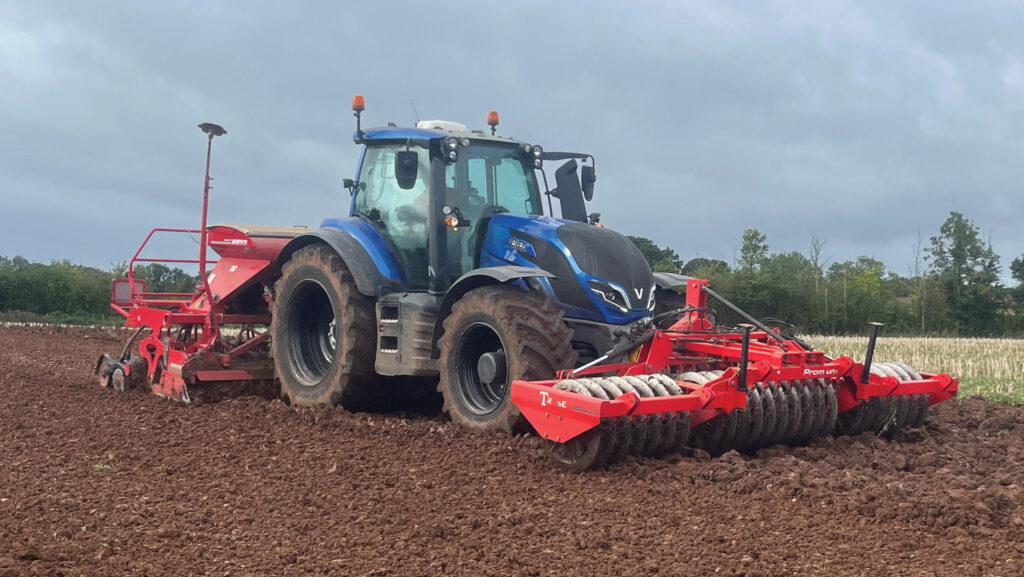
4m Horsch Express KR © Matt Brewster
Despite being 30 miles away, Edwards & Farmer will come out to us day or night, and their phones are never off.
The boss, Rupert Farmer, lives at the firm’s yard and is always available.
He has even been out to us on a Friday night to extract a snapped Valtra drop link pin and install its replacement. That’s service.
We’re big fans of Morris Corfield, which carries out the annual service on both the Jaguar forager and Lexion combine, and also Warwickshire-based Amtec, from whom we source a lot of second-hand cultivation kit.
Favourite piece of kit?
My personal favourite is the 300hp Valtra Q305 with Fendt’s Vario transmission.
The tractor is comfortable, quiet and has an excellent power-to-weight ratio, which means it’s just as handy on trailer work as it is on more testing jobs such as mowing or cultivations.
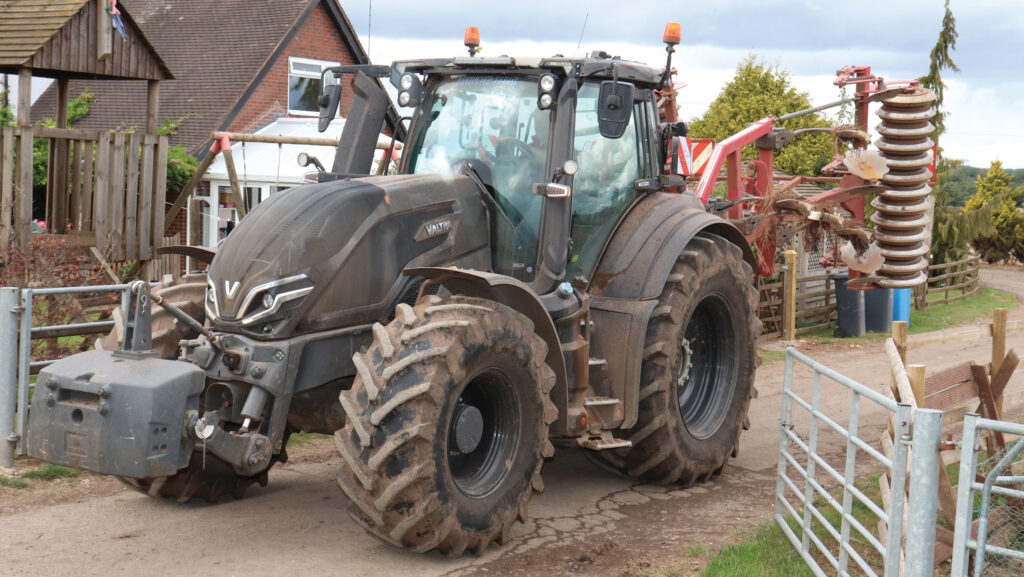
Valtra Q305 © Andrew Faulkner
I love the Vario box and even toyed with going down the Fendt route in the past.
But I just can’t get my head around the price tag – not only of the tractors themselves but also the parts and servicing.
It’s all about cost per hour and, despite Fendt’s strong residuals, they’ve always been miles out whenever we’ve enquired.
Least favourite?
Currently, it’s the McConnel Magnum Euro 280 topper, which, despite being a 2024 machine and not worked particularly hard on stewardship/SFI [Sustainable Farming Incentive] ground, seems to eat drive belts.
It’s been through five sets of belts in 12 months, and at £100 a pop it’s beginning to grate, especially as the belts are also a pain to change. We just can’t get to the bottom of it.
Latest purchase?
An 18-plate, 4,000-hour Sands Horizon 5500 (5,500-litre/36m boom) self-propelled sprayer is our most recent arrival, replacing a 14-plate 24m Sands Vision that I sold privately at £45,000.
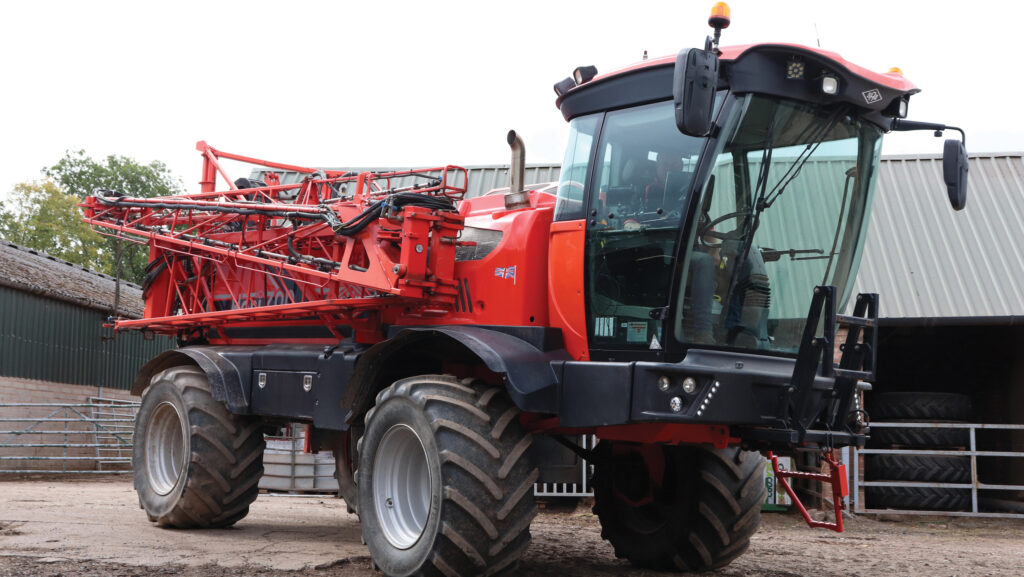
© Andrew Faulkner
We paid £90,000 for the seven-year-old Horizon from Edwards & Farmer, who took it in against a new Horsch self-propelled.
The other new-ish addition is a two-year-old, eight-row Vaderstad Tempo maize drill from Amtec, at £50,000.
It had only clocked 1,000ha and represented a saving of about £30,000 on new. It replaced a six-row Gaspardo, which was great but didn’t have section control.
Amtec is also a handy source of trailers. We take ex-hire, year-old 18t Richard Westerns off them at a £6,000 saving on new.
Oldest machine still at work?
We have a 1968 MF135 – who doesn’t? – for general yard duties as well as topping footpaths and powering a saw bench.
It used to tow smaller combine headers between sites, but, given the 10.7m width of the current Lexion’s table, that job is now a bit beyond the Fergie.
How long do you keep your machines?
The tractors tend to get moved on at three to four years with 5,000-6,000 hours, and the handlers are typically changed at five years.
These machines are replaced with new and, in the main, chopped out while still under warranty.
However, it’s a different story on the combine and forager, which we buy used and keep as long as possible.
Both harvesters came from Morris Corfield – the 19-plate Lexion 760TT as a three-year-old at £260,000 and the 16-plate Jaguar 860 as an eight-year-old at £110,000.
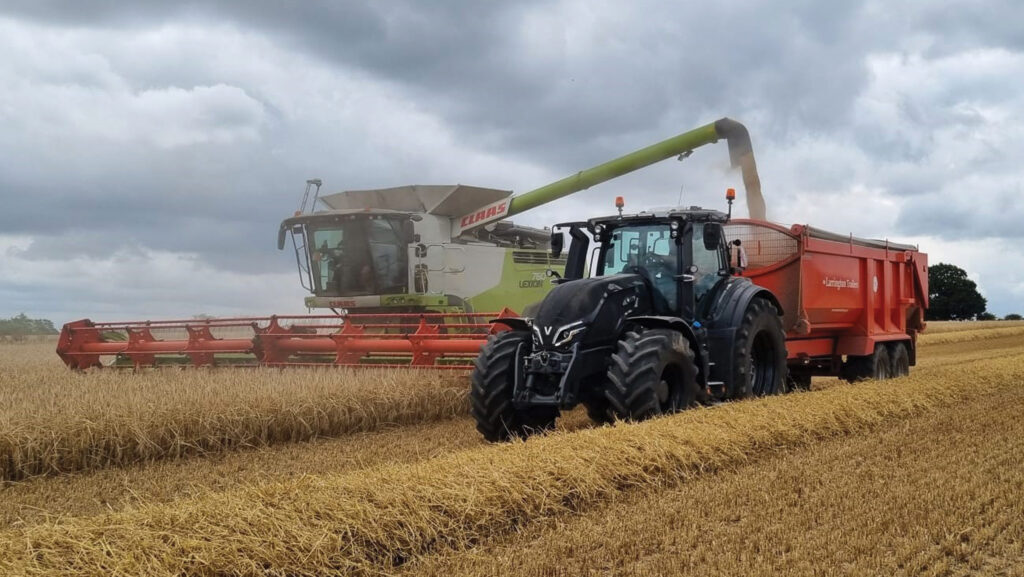
© Matt Brewster
New, the pair would probably have been £400,000 and £300,000, respectively, so again it’s a massive saving.
There’s clearly a risk to running older kit, but we’re diligent on maintenance.
And Morris Corfield goes right through them ahead of every season. Plus, we’re not clocking silly hours.
The annual service must pay off, because we haven’t had Corfields out during harvest for the past three years.
As for the other machines, they’re replaced as and when with a mix of new and nearly new.
The change is generally prompted by an increase in workload or the need to update technology.
Next on your wish list?
Probably a 6m Horsch Pronto as an upgrade to the current 4m.
We’ll have to be patient, though, as nearly-new 6m examples are making strong money.
On our ground we prefer disc drills for their ability to deal with trash and superior seed placement.
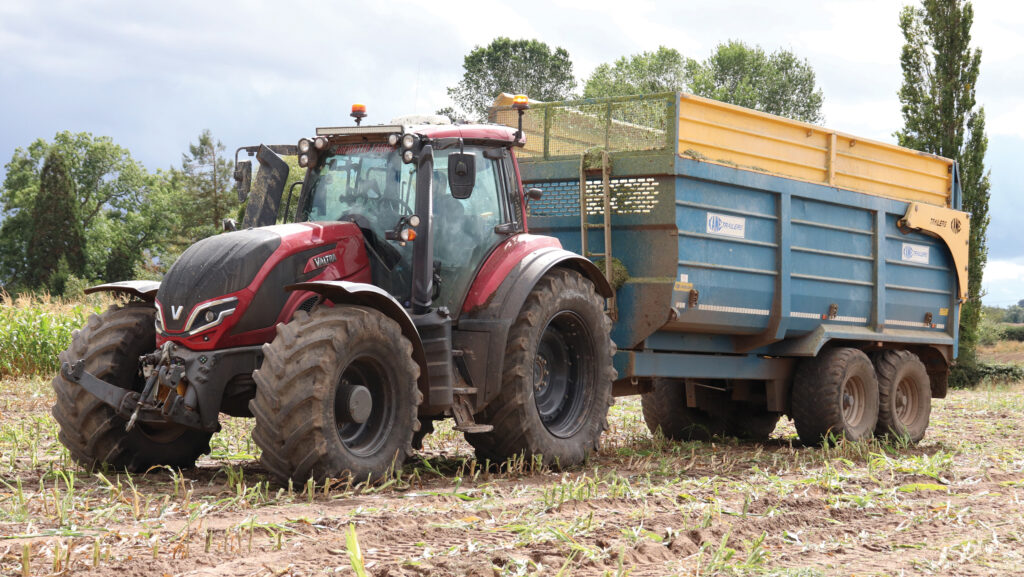
Valtra T195 © Matt Brewster
There’s also another Valtra T195 on order to replace an existing 22-plate model on 5,500 hours.
On average, we buy a tractor and a half every year.
Most embarrassing mistake?
Freshest in the memory is wedging a lump of concrete in the Lexion’s header auger this harvest.
It took our workshop guy, Sam Reed, four hours to beat out the resulting dents and weld the plates back in place.
On a personal note, my biggest mistake was buying a Massey Ferguson 9380 Delta combine in 2020 ahead of the 2021 season.
It came with a five-year warranty but was awful, a heap of cr*p, and eventually went up in smoke at the tail-end of harvest 2022.
To be fair, the dealer, KO Machines, was amazing, visiting us almost daily and doing its best to keep us going despite the multiple issues – drive belts, variator seals, sieve pans, GPS.
But by the time the Delta burned to a crisp, even KO was losing patience.
Needless to say, I won’t be rushing back into a Massey combine.
Most expensive repair bill?
That’ll be the £25,000 engine rebuild on the previous Sands Vision sprayer in October 2022.
One day it was fine; the next it started overheating straightaway. The liners had gone.
Engine done, the Vision ran as sweet as a nut for the next couple of years.
Most expensive spare part?
Anything to do with the MF big square baler. You just don’t seem to get much metal for your money.
A new stuffer arm was £1,100, and even the tiny shearbolts are £75 for a pack of 10.
Best invention?
We’re not really into inventions, although Sam is brilliant at welding and fabrication.
Most of the maintenance is done in-house, except for the tractors, which are all on service contracts.
What couldn’t you live without in the workshop?
Sam wouldn’t be without his MIG welder or, perhaps more surprisingly, the bearing pullers.
We seem to be forever changing bearings.
Favourite and least favourite jobs?
Mowing has always been my top job, even more so now that we have the Q305 and 9.6m McHale triple.
You can comfortably knock down 60ha in a day and with minimal effort. It’s massively satisfying.
As for least favourite, that’s hedgecutting. We have to rotate the job, because none of the guys enjoy it. Tedious, neckache… and the day drags.
At a charge-out rate of £40/hour, it’s not bringing much to the party, either. The rate really needs to be £50-plus.
We only do it because it would cost about £20,000 to get someone in to cut our own hedges, so the £40/hour of customer work helps to pay for the machine.
If we couldn’t do the job in the slacker winter months, we’d drop it.
What’s your everyday transport?
I’ve run Ford Ranger double-cabs for a while, and they suit our needs.
They’re comfortable enough, you can chuck net wrap or whatever in the bed, and there’s space to ferry four guys back to the yard at the end of the day.
The trucks get plenty of abuse and are generally good.
The current one is an 18-plate Wildtrak that I bought a year ago at 50,000 miles for £15,000.
It was found by the insurance assessor, to prove his argument that I’d over-valued the previous Ranger, which had been stolen out of our yard.
Our family transport is a Land Rover Discovery 5. It’s been fine, despite the horror stories.
There’s always a warning light on in the dash, but that’s par for the Discovery course.
Best tractor you’ve had?
Long gone now, we bought a 14-plate, 2,000-hour 220hp MF 7624 off KO Machines for £50,000 in 2016, kept it for four years and sold it back to KO at 5,500 hours for much the same money.
We just hit the market right, when it was really strong at the start of Covid.
The tractor itself never missed a beat. It had heaps of power yet was excellent on fuel.
We replaced it with a 200hp Massey 7722, which was good… but not as good.
And the worst?
That prize goes to a 14-plate New Holland T7.200 Range Command, which we bought with 600 hours for £48,000 in 2015 and sold four years later at £38,000.
The depreciation wasn’t too bad, but it cost us a lot more while it was here.
The brakes and trumpet housings disintegrated at 2,000 hours (£7,500), propshaft bearings (£600 in bearings and a day’s labour), loads of fan belts and ongoing electrical issues.
The T7 was bought as an extra tractor, and nobody liked driving it. We were glad to see it gone.
Biggest bargain?
The second of our two Amazone Cayros six-furrow ploughs.
We had the first one new from KO Machines for about £25,000 in January 2025.
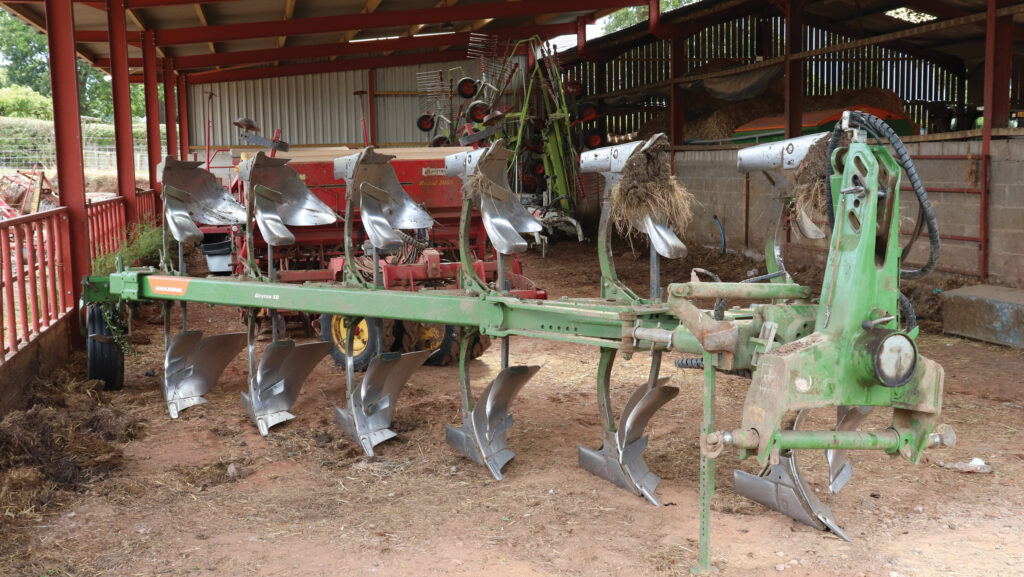
Amazone Cayros six furrow © Andrew Faulkner
Then in the spring we spotted a two-year-old Cayros at a farm sale. It was still on its original metal and hadn’t done much work.
A Kverneland would probably have made £15,000-plus, so I thought I’d take a punt and go to £10,000.
To my surprise, we ended up paying just £8,000.
Best and worst technology?
Best are auto-steer and section control – for obvious reasons.
They make life easier for the operator and also save on time, fuel and inputs.
Worst is the safe load indicator on telehandlers: the way it locks you out when the machine overbalances is potentially dangerous.
In my view, a simple alarm would be safer. You hear the alarm, pull the boom back in, job done. No faffing about with fiddly overrides.
Biggest current bugbear?
The recent extremes in UK weather patterns. Some sort of return to “normality” would be good.
Here, we’ve got pretty adept at paddling about in autumn/spring swamps, whereas for most of this year it’s been more like farming a desert.
In the shed
- Tractors Valtra Q305, T235 x2, T215, T195 x4; 1968 MF135
- Combine Claas Lexion 760TT with 10.7m header
- Forager Claas Jaguar 860 with grass pick-up and eight-row Orbis maize header
- Handlers JCB 542-70 and TM320S
- Sprayer and spreader Sands Horizon 5500 (5,500 litre/36m), Amazone ZA-TS 4200
- Drills 4m Horsch Pronto, 4m Horsch Xpress KR, 3m Vaderstad Rapid 300S, 3m Amazone combi drill, eight-row Vaderstad Tempo
- Cultivators 4m Horsch Terrano FX, 3m TerraTech Multi-Cut, 6.5m Vaderstad Carrier, 7m Weaving stubble rake, six-furrow Amazone Cayros plough x2
- Grass Claas Liner 3600 four-rotor rake, Krone Swadro 880 two-rotor rake, Claas Volto 900 tedder, MF TD776 tedder, 9.6m McHale front/rear mower, 6.4m McHale rear trailed/front-mounted mower, McHale Fusion 3, MF 2270 big square baler (120x90cm)
- Muck 12t Ktwo 1200 Duo rear-discharge spreader x2, 12m Mastek dribble bar, 17,500-litre Conor tanker with 8m dribble bar
- Trailers 18t Richard Western x2, 18t Kane, 18t Larrington, 16t Larrington

